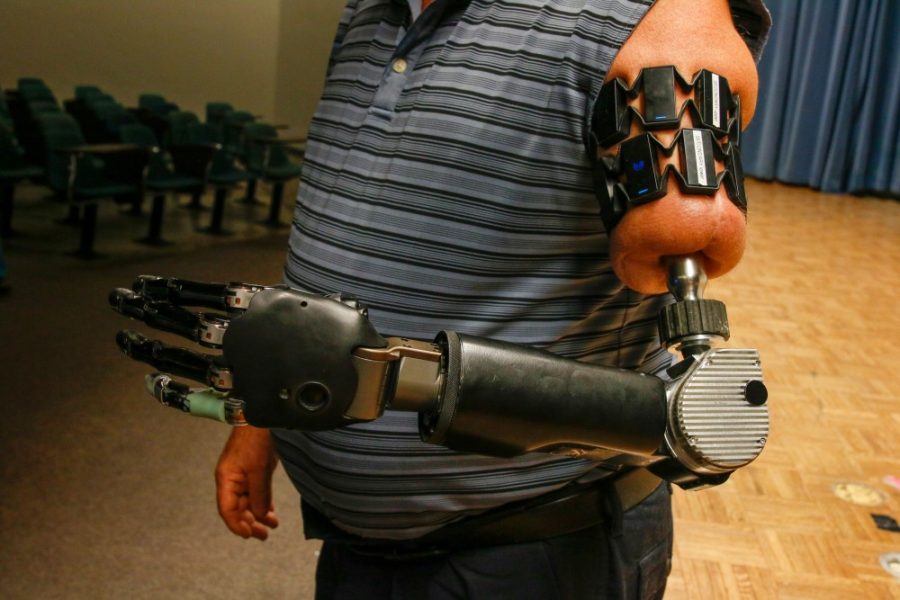A University of Arizona College of Medicine alumnus has played a significant role in the advancements of electronic prosthetics.
Dr. Albert Chi, who graduated from the UA College of Medicine in 2003, was a trauma surgeon in the Navy Reserves when he saw the firsthand the damage war can cause.
“More than 80 percent of trauma experienced in combat are [the loss of] upper and lower extremities,” Chi said at a presentation at Banner — University Medical Center on June 28.
Upon returning from deployment, Chi began working at the Johns Hopkins University Applied Physics Laboratory. There, he met Johnny Matheny, a cancer survivor who lost his arm as a result of the disease. Together, Chi and Matheny would make history.
In 2014, Matheny became the first person in the United States to undergo a successful osseointegration surgery. As defined by the Walter Reed National Military Medical Center, osseointegration surgery is the “direct connection of bone to a metal implant.”
Matheny’s surgery consisted of a metal rod being inserted into his humerus bone, which acted as a stabilizer for his new robotic prosthesis. What makes Matheny’s prosthesis unique is not just that it is robotic. Matheny can control his prosthetic just as he could a normal arm — with his mind.
In order for Matheny to be able to control his prosthesis like a normal arm, Chi and his team at The Johns Hopkins Hospital performed what is known as targeted muscle reinnervation (TMR). According to the Johns Hopkins Hospital, TMR “reassigns nerves that once controlled the arm and the hand.”
By performing this procedure, patients like Matheny, who have experienced arm amputations, can control their prostheses as they would control a normal arm.
Matheny’s prosthesis is partially controlled by his mind through the TMR procedure, but the prosthesis also relies on Wi-Fi to work in its full capacity. Matheny’s prosthesis connects to Wi-Fi through Bluetooth technology that is inside the device, which can then be controlled through an app on his phone.
Chi explained that Matheny’s prosthesis has different clouds in its system. Those clouds represent different physical movements that Matheny can just think of and the arm will do.
“I can go on my phone, open the app, and type in that I want to do a thumbs-up,” Matheny said at the June 28 presentation. “When I type that in, it creates a new cloud of the movement, then all I have to do is think of the movement and it does it.”
Matheny’s prosthesis also has different modes that he can switch to in his app. Depending on the activity, Matheny can make his arm move at different speeds and forces.
As prosthetics technology continues to grow and improve, the quality of life for amputees also continues to improve.
“Patients who undergo TMR experience less phantom limb pain and residual pain than those who don’t,” Chi said. “We now offer TMR to all the amputee patients we see.”
Not only is the growing technology of prosthetics improving the general quality of life for amputee patients, military amputees are also being positively affected. According to Chi, less than three percent of patients who lost a limb while serving returned to active duty in the 1980s. Now, that number has increased 16.5 percent.
Chi also works with Enabling the Future, and organization that offers low-cost 3D-printed prostheses for amputees. At Enabling the Future, the 3D-printed prostheses can be customized, donated and recycled.
The goal of Chi’s work with his patients, veterans and Enabling the Future amputees alike is to make their lives better by giving them the ability to use the limbs they’ve lost.
Follow Sadie Cruz on Twitter















